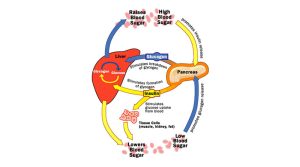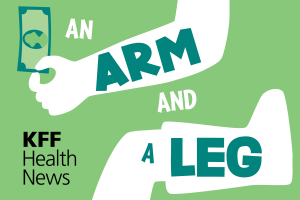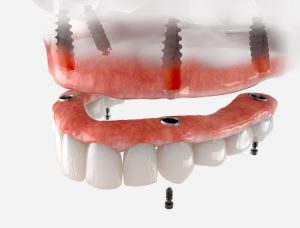Feeling Suicidal Before Your Period – Is It Normal?

If you ever experienced hopelessness and suicidal thoughts before menstruation, know that you’re not alone. Even if you don’t have a diagnosed mood disorder, you might experience suicidal thoughts because of hormonal fluctuations during your cycle.
Hormones and Suicidal Thoughts
How we feel throughout the month, physically and mentally, depends heavily on three sex hormones: testosterone, estrogen, and progesterone.
These hormones fluctuate depending on where in our cycle we are, which is why we might feel positive during certain weeks (ovulation phase) and negative during other weeks (luteal phase).
These fluctuations can cause women to experience extreme negative emotions, such as anger, depression, and even suicidal thoughts. Studies show that there might be a direct link between a severe drop in estrogen and progesterone after ovulation and increased suicidal thoughts in women.
Research shows that suicide is the second leading cause of death for adolescent girls in America, with 22% of girls reporting suicidal ideation, compared to 12% of adolescent boys, and it could be due to hormonal fluctuation adolescent girls experience. Even women without diagnosed mood disorders (such as borderline, depressive, or anxiety disorders) can experience suicidal thoughts due to hormonal fluctuations.
The largest study to this day that looked into PMDD and suicide found that 34% of women who suffer from PMDD have attempted suicide. Researchers confirmed that suicide attempts due to PMDD are independent of depression, PTSD, and other disorders. 67% of women who never received another mental health diagnosis reported active suicidal ideation, compared to 72% of women who had other mental health disorders.
What’s also interesting is that a recent Swedish study found that women who experience PMS and PMDD are also more prone to various forms of injuries, not only suicidal behavior, such as car accidents, falls, and other accidents.
What Is PMDD?
PMDD, or pre-menstrual dysphoric disorder, is a disorder “characterized by severe mood disturbances, including profound depression, anxiety, and irritability, typically starting one to two weeks before menstruation and easing when the menstrual period begins,” explains certified sex therapist Aliyah Moore, Ph.D. It affects 3-8% of women of reproductive age.
PMDD is not depression or other mood disorders and has symptoms such as:
- Depressed mood, feelings of hopelessness, or suicidal thoughts
- Anxiety, tension, feelings of being “keyed up” or “on edge”
- Persistent and marked anger or irritability
- Decreased interest in usual activities
- Lethargy, easy fatigability, or marked lack of energy
- Marked change in appetite, overeating, or specific food cravings
- Hypersomnia or insomnia
- Other physical symptoms include breast tenderness or swelling, headaches, joint or muscle pain, a sensation of bloating, or weight gain
Researchers are still not 100% sure why some women have PMDD. However, some research suggests that women with pre-existing mood disorders like major depression disorder and anxiety disorder could be more prone to experience PMDD.
PMDD vs. PMS
Most women will experience some degree of PMS (pre-menstrual syndrome). Some might have more severe symptoms, which might interfere with their lives more, while others barely notice it and can go about their days as they usually would.
It’s important to note that PMS and PMDD are not the same. PMS can be managed and doesn’t interfere with your life or cause you to be a completely different person, whereas PMDD can significantly affect your day-to-day life and healthy functioning
Is There a Cure?
While there is no magical cure that will make the severe hormonal fluctuations or PMDD go away completely, there are things you can do to manage the symptoms. According to Harvard Health, there are two ways to manage PMDD:
Antidepressants
Certain types of antidepressants that slow the reuptake of serotonin, known as SSRI, could help some women manage the severe symptoms during the luteal phase of their cycle. What’s interesting is that according to Harvard Health, women with PMDD don’t have to take antidepressants every day but can only do that during the luteal phase of their cycle when the symptoms are the most severe.
Lifestyle Changes
Lifestyle changes could also impact the symptoms and help manage severe mood fluctuations. Consuming less caffeine, sugar, and alcohol and focusing on an unprocessed whole-food diet, plus incorporating some aerobic exercise, might help improve the symptoms. Mindfulness might help manage stress, which can also have a positive impact on women who struggle with PMDD.
Cognitive Behavioral Therapy (CBT)
There is some evidence that CBT could potentially help women minimize and something even completely eliminate PMS symptoms.
What To Do When Feeling Down
Many women tend to suffer in silence when they experience PMDD symptoms such as suicidal thoughts. It’s important to understand that you’re not alone and that whatever discomfort you’re experiencing is temporary.
If your symptoms are severe, contact your doctor, who can help find a treatment that suits you. Otherwise, consider reaching out to a therapist to see if talking therapy can help.








